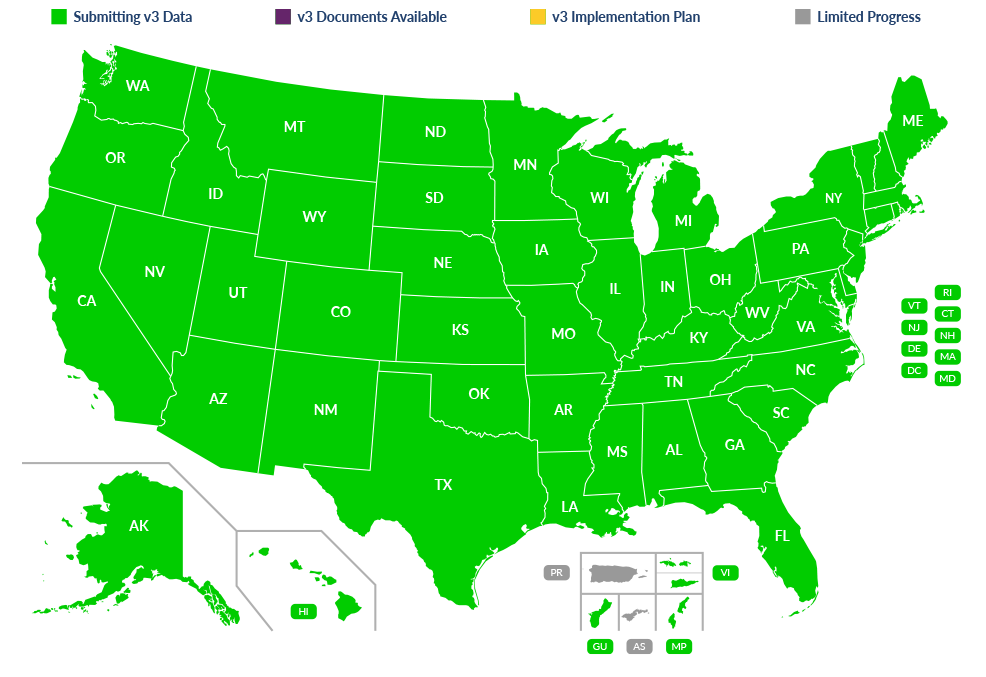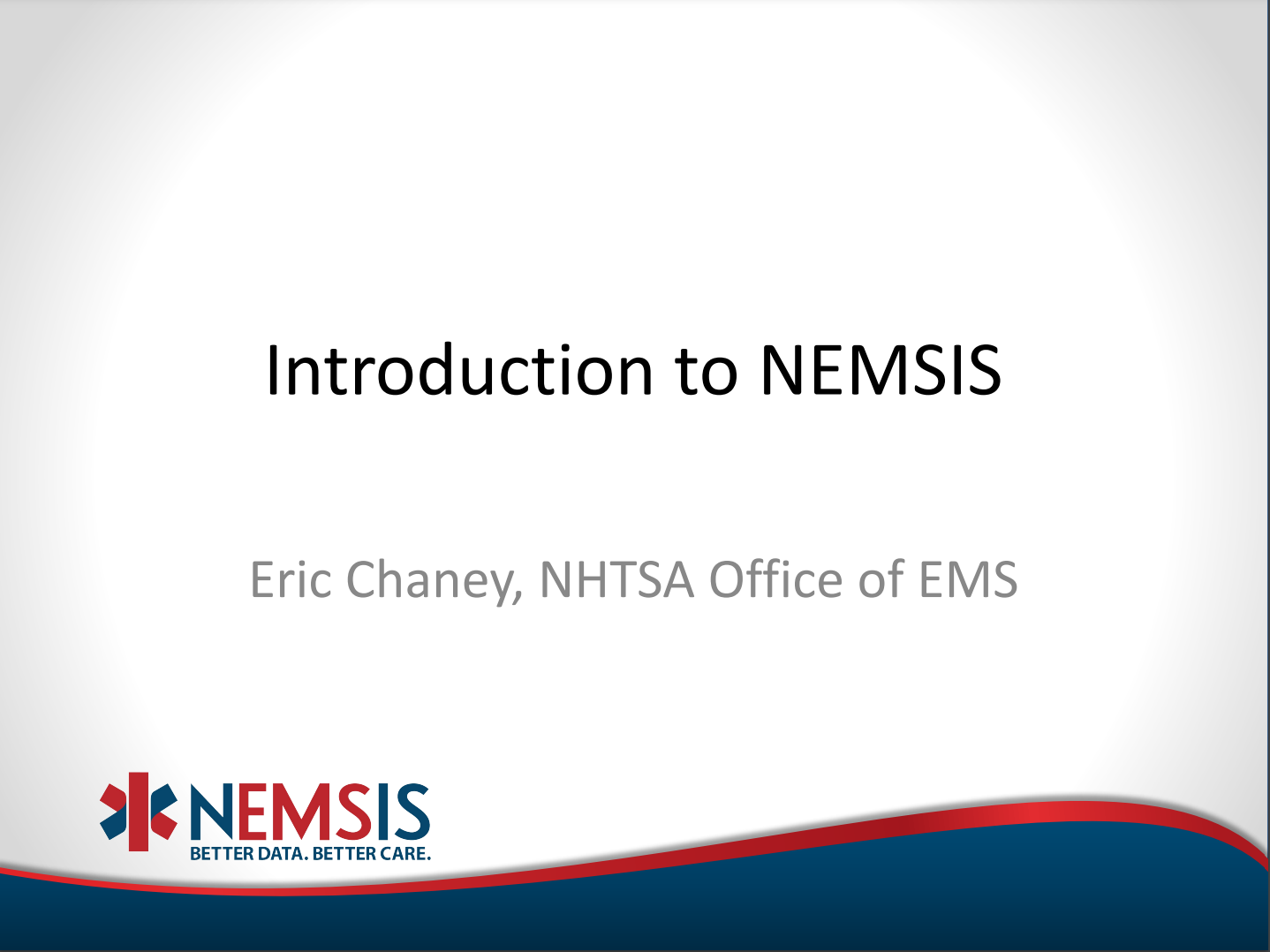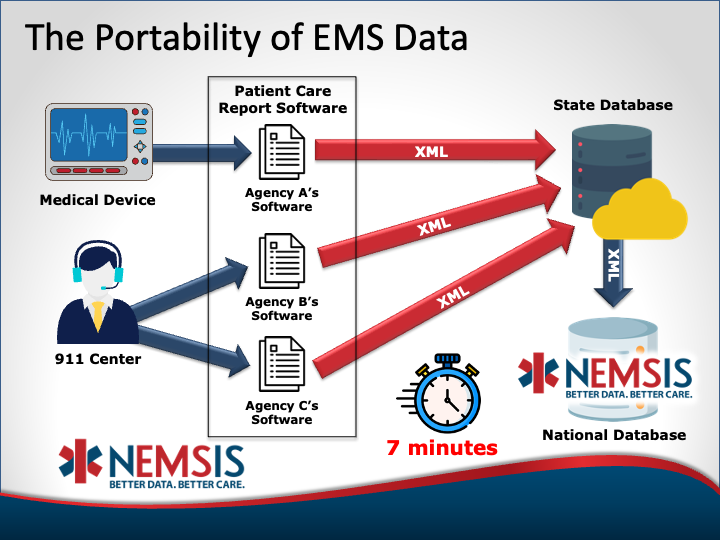Nationwide EMS Incident Data
The National EMS Information System (NEMSIS) works to standardize data collected by EMS agencies and also provide the framework for collecting, storing and sharing that data from States, Territories and Tribes nationwide.
The NEMSIS uniform dataset and National EMS Database help local, State and national EMS stakeholders more accurately assess EMS needs and performance, as well as support better strategic planning for the EMS systems of tomorrow. Data from NEMSIS is also used to help benchmark performance, determine effectiveness of clinical interventions and facilitate cost-benefit analyses.
Tens of millions of records from more than 10,000 agencies across the country are submitted to the National EMS Database each year. The information in those records has helped advance EMS research, informed the response to public health threats and much, much more.
NEMSIS 101
The National EMS Information System provides standardized EMS documentation and data collection practices to facilitate the sharing of EMS data with local, State, and national organizations. The following are the core components of NEMSIS:
Documentation standard for EMS response and care
Data definitions for point-of-care data collection
Compliance testing for EMS ePCR software
Interoperability and exchange standards
National EMS Database
To collect, clean, store and share valuable information, NEMSIS continues to evolve. To learn more, see "Introduction to NEMSIS."
The National Public-Release Research Dataset continues to grow, and tens of millions of new records are added each year. This data is readily available due to the efficient portability of EMS data.
The EMS Data Standard includes 596 data elements that can be implemented by an EMS system. 165 of those are national elements. National, State, and local datasets are standardized, uniform, and interconnected as a result. Federal interest in EMS data is growing because of the role of timely, reliable data in national registries and other healthcare applications.
-
National EMS Dashboard
This dashboard of motor vehicle crashes shows up-to-date information of EMS activations across all 50 States, three Territories and Washington, D.C.
-
EMS Data in Use
From statistics about the opioid crisis and COVID-19 to a traffic crash database for highway safety, data is applied across the country to help solve complex public health problems.
-
Request EMS Data (NEMSIS)
Visit NEMSIS.org to request the 2021 NEMSIS Public-Release Research Dataset and the Data Cube, among other resources.
-
Collecting Good Data
The more accurate and complete the information from patient care reports, the better it can be used to improve patient care and public health and help keep providers and patients safe.
-
Other Data Standards and Sources
Access these other resources and research to better understand the state of EMS in the U.S.





